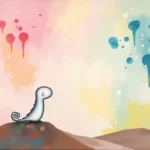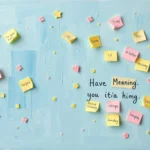
Have you ever woken up from a dream that left you breathless, puzzled, or even inspired? Dreams are like windows into our subconscious, filled with symbols and messages that can guide us in our waking life. They can be whimsical, terrifying, or completely nonsensical, but they all have one thing in common: they hold meaning. Understanding these symbols can feel like discovering a treasure map to your own psyche.
Whether you find yourself flying high in the sky, wandering through strange landscapes, or encountering familiar faces, each dream contains clues to your inner world. As a friend who has delved into the depths of dream symbolism and interpretation, I’m here to help you unpack those messages and apply their insights to your life. Let’s explore these symbols and what they might be trying to tell you.
The Language of Dreams: Unlocking Symbolic Meanings
Dreams speak a language of symbols, and each symbol can have multiple meanings depending on cultural, psychological, and personal contexts. For instance, water in dreams often represents emotions; a calm lake can symbolize peace, while a raging storm might suggest turmoil. Similarly, teeth can indicate feelings about self-image or vulnerability.
Consider the snake, a symbol rich in cultural significance. In many traditions, snakes symbolize transformation and healing, as seen in the myth of Asclepius in Greek mythology. However, they can also represent deceit or fear, particularly if you have a phobia of reptiles. Thus, when you dream of a snake, it could signify a need for personal growth or a warning about someone in your life.
Another common symbol is flight. Taking to the skies in a dream can represent a desire for freedom or escape from a situation. In psychological terms, it may reflect your aspirations and ambitions. However, if you struggle to gain altitude, it might indicate feelings of being held back or constrained by responsibilities.
These symbols are not universal; they can shift meaning based on your unique experiences. The key to understanding your dreams lies in recognizing how these symbols resonate with your feelings and life circumstances.
Dreamscapes: Real-Life Scenarios and Their Meanings
Understanding the meanings behind dreams often comes alive when we look at real-life scenarios. Here are some common dream experiences and what they might signify:
1. The Falling Dream
Imagine you’re standing at the edge of a cliff and suddenly start to plummet. This dream often signifies feelings of loss of control or anxiety about a situation in your life. Psychologically, it may reflect insecurities or fears about failing. What area of your life feels unstable?
2. Missing a Train or Flight
Picture yourself rushing to catch a train or flight but arriving just as it departs. This scenario can symbolize missed opportunities or feelings of inadequacy. It might reflect your worries about not meeting your goals or timelines in life. Are you feeling pressured to keep up with expectations?
3. Being Chased
In this dream, you find yourself running from an unseen pursuer. The chase often represents avoidance of something in your waking life that you fear confronting, whether it’s a person, situation, or emotion. It may also symbolize stress or anxiety. What are you running from?
4. Naked in Public
Imagine walking through a crowded area without clothes. This dream can tap into feelings of vulnerability and fear of exposure, often linked to self-image issues or anxiety about how others perceive you. Are you feeling judged in some aspect of your life?
5. Losing Your Voice
In this scenario, you attempt to speak, but your voice won’t come out. This can symbolize powerlessness or the inability to express yourself. It might reflect a situation where you feel unheard or overlooked. Where do you feel silenced in your life?
Each of these scenarios can lead to valuable insights. By examining your emotions surrounding these dreams, you can start to understand what they may be trying to communicate.
Awakening to Possibilities: Personal Growth Through Dreams
Dreams are not just fleeting images; they can serve as powerful tools for personal growth. By reflecting on the messages within your dreams, you can gain clarity and direction in your life.
First, consider keeping a dream journal. Write down your dreams as soon as you wake up, capturing every detail. Over time, patterns will emerge, helping you link recurring symbols to real-life issues you face. This practice can illuminate areas where you might want to focus your personal development efforts.
Next, engage in dream analysis. Take time to meditate on your dreams and the emotions they evoke. Ask yourself questions like: What does this symbol mean to me? How does it relate to my current life situation? By doing this, you can begin to see your dreams as guides rather than mere nocturnal entertainments.
Additionally, consider exploring cultural perspectives on your dreams. Different cultures have varying interpretations of symbols and scenarios. Learning about these perspectives can enrich your understanding and provide new insights. For instance, in many Indigenous cultures, dreams are seen as connections to the spirit world, offering guidance and wisdom.
Finally, harness the energy of your dreams to set intentions for your waking life. If you dream of flying, perhaps it’s time to explore new opportunities or take a leap of faith in your career. If you dream of being chased, consider what fears you need to confront to regain your sense of control.
In conclusion, your dreams are a treasure trove of insight, urging you to explore the depths of your emotions, desires, and fears. They invite you to reflect on your experiences and to grow from them. As you cultivate a deeper understanding of your dreams, remember: you hold the key to unlocking their meaning.
Take a moment to reflect on this powerful thought: each dream is a stepping stone on your path to self-discovery and personal growth. Embrace the journey, and let your dreams guide you toward a more fulfilling life.







